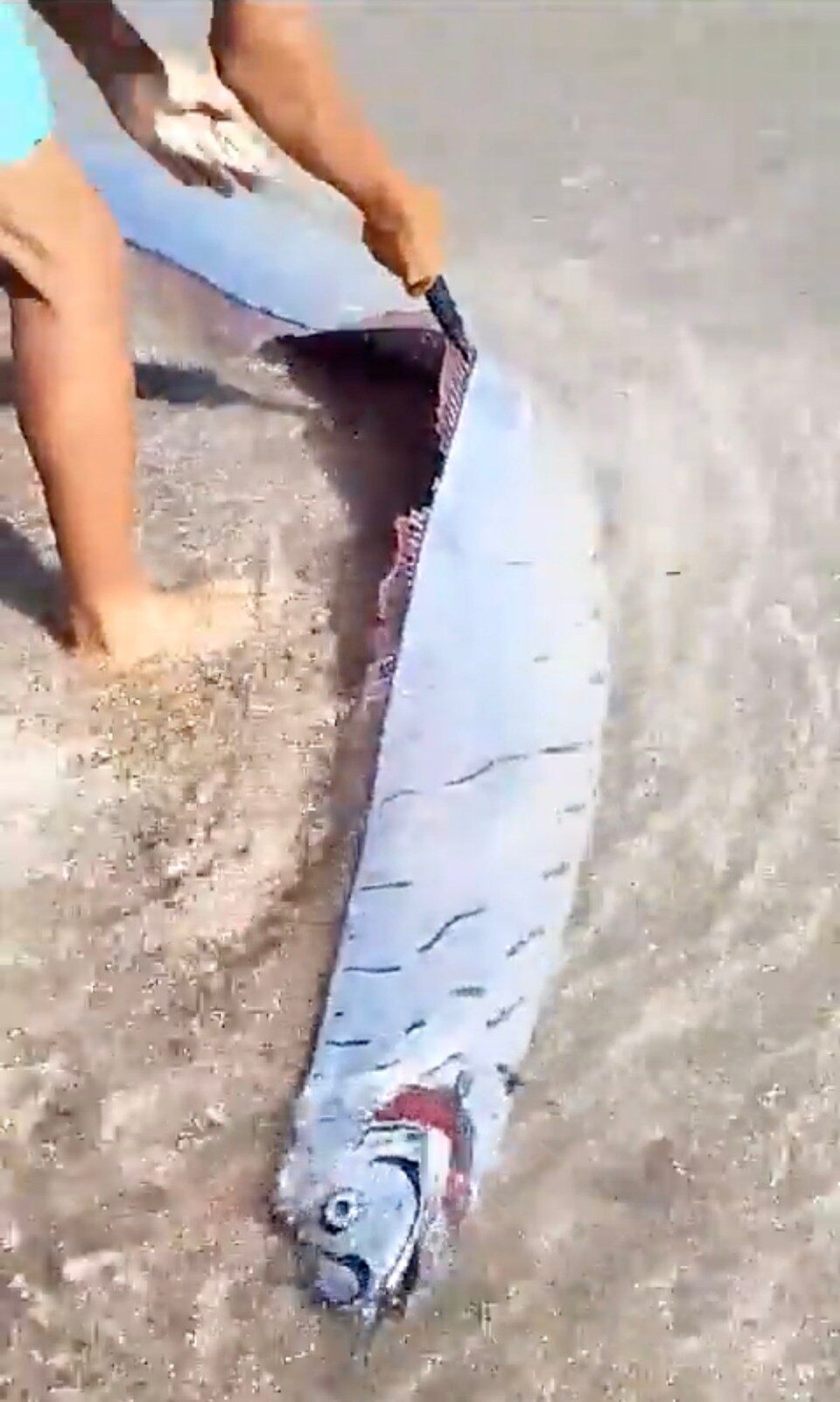Spotting a deep-sea oarfish species is a signal for an impending quake, according to Japanese folklore.
The elongated fish was spotted on the shores of Los Coquitos beach in Pepillo Salcedo, Dominican Republic on Monday.
The oarfish died shortly after.
The sea serpent was eerily located near the Septentrional-Oriente strike-slip Fault Zone, responsible for the 1842 Cap-Haïtien earthquake and tsunami in neighbouring Haiti, which killed approximately 5,300.
Oarfish are one of the longest fish in the ocean and can measure up to 56ft (17m) in length and weigh over 200 kgs (441 lbs).
Some researchers speculate they move into shallower waters due to electromagnetic changes that occur when there is tectonic activity linked to faults.
On Monday, José Ramón Reyes, Dominican Deputy Minister of Coastal and Marine Resources of the Ministry of Environment, told local media: "It's a deep-sea fish.
"It's unusual to find it at the surface.
"It doesn't pose any threat, it's a fish that typically inhabits the depths."
The belief they appear before earthquakes originates in Japan where they are linked to the myth of Namazu, a giant catfish which lives under the country's islands and supposedly causes earthquakes by thrashing its tail.
The oarfish's reputation as a creature of doom was further enhanced after 10 were washed up along Japan's northern coastline in 2010.
Months later, a massive earthquake struck off rocked the country, triggering a tsunami that killed nearly 19,000 people and destroyed the Fukushima nuclear plant.
What is an oarfish?
Found in all temperate to tropical oceans yet rarely seen, the oarfish like to lurk at least 1000 metres below the surface.
Human encounters with live oarfish are rare.
Most information is collated from records of oarfish caught or washed ashore.
They are often been labelled as earthquake predictors because they tend to wash up on the shore before and after tremors.
The plankton eating bony fish have no scales.




RSOE EDIS Event List